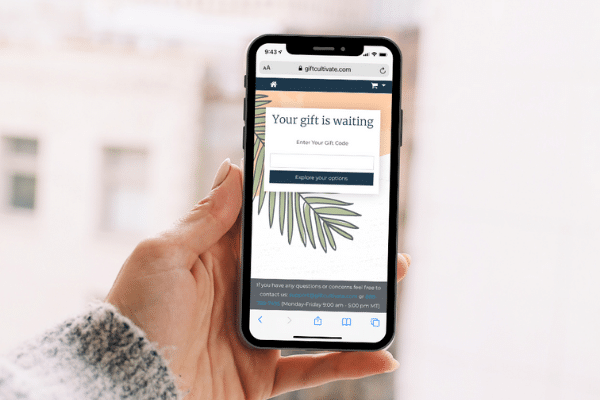Traditional loyalty programs have been around since the early 1900s. What started as mass-produced cutout-and-save coupons has become loyalty programs that promise rewards if people earn and accumulate enough points. From airline mileage programs to grocery and drugstore frequent shopper cards, these kinds of loyalty programs can be full of confusing barriers and endless reward options that tend to frustrate and overwhelm people. Our team of experts agrees that the answer to confusing terms and conditions is simple: instead of spending money to facilitate a loyalty program, appreciate people with something tangible.
Before companies can begin promoting effective loyalty strategies, they must first understand why many loyalty programs fail, and how gifting can help.
Unbalanced give and take
At first, it may interest people to engage with a brand’s loyalty program and stack up points. Once it becomes apparent that the program is limited and only redeemable if people earn and accumulate enough points, the allure quickly wears off. Research shows a staggering 97% of loyalty programs are transactional and conditional; meaning the more people spend, the more they can earn. However, that kind of tradeoff isn’t economically sustainable for brands or people over time.
More often than not, companies overspend in hopes of increasing retention rates and brand advocacy. Studies show that 64% of people connect with a brand because they believe the brand values them and truly want to reward their loyalty. However, when a brand’s loyalty program doesn’t match people’s expectations and the point-based redemption process isn’t what they were promised, disappointment ensues. People bounce, and the brand loses out.
Fragmented user experience (UX)
Imagine you’re stopped at an airport and asked if you want to join an airline’s loyalty program. It takes five minutes to join and you’re instantly rewarded with double the points. A couple of weeks later, you receive an email while on vacation that says your points will expire in the next two weeks. Naturally, you take out your iPhone and are excited to redeem your points for a gift. But while you’re trying to log in and begin the redemption process, an error message appears saying you can only redeem your points from a desktop computer or laptop. Neither of which you packed for your trip, and now you feel frustrated and deflated.
Redeeming points for rewards should be as easy as opting into a loyalty program, right? According to a recent survey, that isn’t the case. This poll found that over 35% of people in frequent flyer programs admitted that they didn’t know how to track or redeem their mileage rewards. And with that, over 40% of airline points expire every year. So, where’s the disconnect? It’s not due to a lack of tech-savvy people but to companies’ lack of user-friendly interfaces. Many loyalty programs struggle to employ multi-channel delivery options (i.e., tablets or smartphones) for people to redeem their points. Research confirms that 79% of loyalty programs make use of mobile channels for opting in new customers, but only 24% let people use mobile devices to redeem points. It’s these kinds of flaws and irrational UX that turn many people off.

Unlike point-based loyalty programs, gifting doesn’t come with terms and conditions. There are no confusing barriers people have to overcome or lofty goals they have to meet to feel appreciated. For over a decade, point-based loyalty programs have become more restrictive and hard to navigate. Alternatively, gifting has evolved and adapted to meet people’s needs, much like Cultivate. Virtual and Event Gifting has transformed the way we appreciate people—no point platforms or opting-in necessary.



Leave a Comment